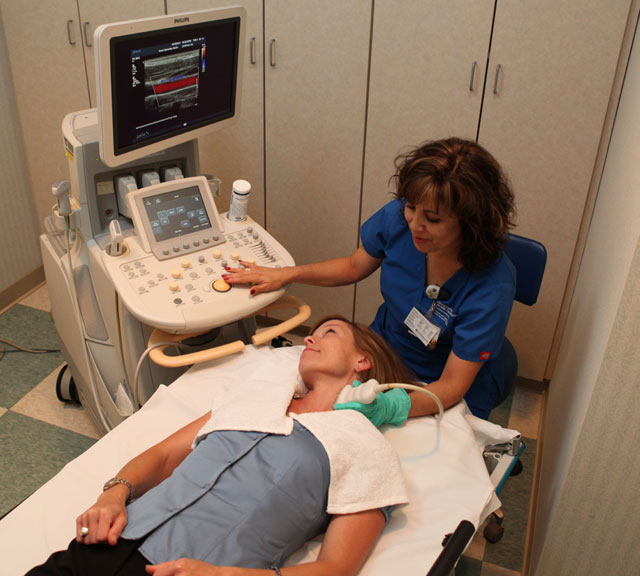Vascular Tests Reveal the Inside Story On Blood Flow

Find Your Perfect Match
Answer a few questions and we'll provide you with a list of primary care providers that best fit your needs.
If you’ve ever been in rush-hour traffic, snaking in a single lane past a highway accident, you have a good picture of your blood trying to flow through narrowed arteries or veins. If your doctor suspects this is happening in the vessels that supply your neck, legs, or arms, she may suggest a vascular test to identify exactly what’s going on
Why Do I Need a Vascular Test?
 Vascular tests can help your doctor find and treat medical conditions like blocked blood flow or narrowing of the blood vessels. Gary J. Fishbein, MD, emphasizes the importance of checking out certain symptoms. "Decreased blood flow can happen anywhere in the body. And severe symptoms can signal a big problem. Quick action can prevent a stroke or other serious condition.”
Vascular tests can help your doctor find and treat medical conditions like blocked blood flow or narrowing of the blood vessels. Gary J. Fishbein, MD, emphasizes the importance of checking out certain symptoms. "Decreased blood flow can happen anywhere in the body. And severe symptoms can signal a big problem. Quick action can prevent a stroke or other serious condition.”
Dr. Fishbein explains that your health care provider might order a test to:
- Evaluate signs that indicate decreased blood flow in the arteries and/or veins of the neck, legs, or arms. For example, blocked or narrowed carotid arteries can increase the risk of stroke.
- Evaluate previous procedures to restore blood flow to an area
- Evaluate a vascular dialysis device, like an A-V fistula (a connection of an artery to a vein made by a surgeon)
- Evaluate a patient with risk factors like high blood pressure, diabetes, elevated blood cholesterol or a family history of stroke or heart disease
- Prepare a patient for coronary bypass surgery
What Studies Can Diagnose a Vascular Disorder?
Doctors have a variety of studies, or tests, to assess the blood flow in arteries and veins. Most, but not all, are noninvasive, meaning no needles will pierce your skin. This is especially true for tests for peripheral vascular disease, the narrowing of artiers leading from the heart to your head and limbs.
Decreased blood flow can happen anywhere in the body.
Some of the most commonly prescribed tests include:
- Angiogram. A procedure that uses X-rays taken during the injection of an iodine dye. The surgeon watches the flow of dye to identify blockages. The test is used to both diagnose and treat blockages in your arteries. Usually you’ll be sedated with local anesthesia.
- Ankle-Brachial Index (ABI). A noninvasive test that uses inflatable cuffs to check blood flow and measure blood pressure in the arteries of your legs and feet. It’s not much more complicated than having a routine blood pressure test with a cuff on your arm, and is typically done in an outpatient clinic.
- Carotid Ultrasound. A painless, noninvasive test that uses sound waves to create pictures of the carotid arteries in the neck. It’s often used to detect narrowing of the carotid arteries or to determine if you have plaque buildup, causing carotid disease (hardening of the arteries).
- CTA and MRA. Imaging tests that provide detailed information about blood vessels. They let your surgeon see any vascular disease in 3D, which helps to accurately assess just how extensive it is. CTA (computed tomography angiography) uses an injection of iodine dye to diagnose and evaluate blood vessel disease or related conditions like blockages or aneurysms (a weakened bulge in a blood vessel wall). MRA (magnetic resonance angiograph) uses a powerful magnetic field to identify problems or diagnose atherosclerotic (plaque) disease.
Find Your Perfect Match
Answer a few questions and we'll provide you with a list of primary care providers that best fit your needs.
Source: Society for Vascular Surgery; American College of Radiology;Gary Fishbein, MD, FACC, Premier Cardiovascular Institute





